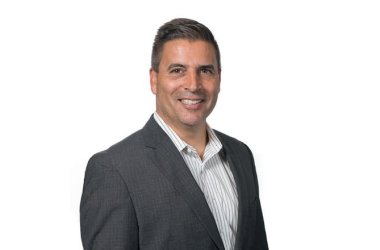 SAP’s pending return to a single CEO structure is the right move at the right time, according to co-founder and Chairman Hasso Plattner and co-CEO Jim Hagemann Snabe, who is planning to leave his post next May and join the company’s Supervisory Board.
SAP’s pending return to a single CEO structure is the right move at the right time, according to co-founder and Chairman Hasso Plattner and co-CEO Jim Hagemann Snabe, who is planning to leave his post next May and join the company’s Supervisory Board.
Snabe has served as co-CEO since February 2010 along with Bill McDermott, following the departure of sole CEO Leo Apotheker. SAP announced Snabe’s planned transition to the board on Sunday.
“This co-CEO model worked so fabulously but only works in certain situations and [with] certain people,” Plattner said during a conference call on Monday.
McDermott and Snabe are “special people who could work together without jealousy and without complexity,” Plattner added. “Not having Jim is a clear indication to go ahead with what we have, which is a tremendous leader in Bill McDermott.”
McDermott and Snabe have overseen a repositioning of SAP’s business that included the acquisitions of Sybase, SuccessFactors and Ariba as well as the release of the HANA in-memory database platform. HANA now lies at the heart of SAP’s product development efforts moving forward.
Snabe, whose appointment to the Supervisory Board will require approval from at least 25 percent of shareholders, called his time as co-CEO “the most exciting years of my career” but said now his priorities lie in spending more time with his family.
In addition, Snabe said from the beginning that he’d only like to remain in the co-CEO job for about four years, Plattner said. While saying that time frame was never an “exact science,” Snabe did not contradict Plattner’s statement.
As plans commence for Snabe’s transition out of the co-CEO job, SAP is in a strong position and will be in good hands with McDermott as sole CEO, according to Snabe.
“Bill is probably the best CEO in the industry, period,” he said. While most people view McDermott as being focused on sales, he has a “deep understanding” of products and technology as well, Snabe added.
While for now SAP seems intent on returning to a single CEO structure, some observers believe executive board member and HANA champion Vishal Sikka could one day take a co-CEO slot.
Sikka was recently placed in charge of all software development at SAP, a move that seemingly left Snabe, who has focused on products, with a reduced operational role.
Asked whether his decision to leave was based on having too few duties, Snabe called the notion “funny”. Leadership is about “developing leaders all around you to take on bigger challenges,” he said. Sikka has developed into a “full-blown innovator” in charge of 20,000 developers and through HANA has “been reinventing the database layer, which was a mature market,” Snabe added. “We are in a very, very strong position with Vishal Sikka.”
McDermott’s pending ascension as well as Sikka’s potential role moving forward also speak to cultural change at SAP. McDermott will be the first American to head the vendor since its founding, and Sikka and much of SAP’s product development activities are based outside of its Walldorf headquarters.
“I am a truly global executive working for a truly global software company,” McDermott said, adding that he will spend a “fair share of time in Germany” moving forward.
McDermott also struck down long-standing speculation that he is interested in a political career.
“I’m not exactly certain where this political rumor comes from but I’ve heard it enough times now to want to set it straight,” he said. “The passion of my life is SAP. I have no plans nor have I had any plans to run for office.”
McDermott will fulfill the term of his contract, which runs through June 2017, and would stay longer if asked by SAP’s board, he said.
As sole CEO, McDermott will be charged with managing SAP’s continued transition from on-premises software license sales to SaaS (software as a service). While SaaS still represents a small portion of SAP’s overall revenue, the totals are growing as customers making new purchases decide to add cloud products rather than expand their on-premises license base.
Like all traditional software vendors, SAP has to manage the expectations of investors when it comes to SaaS, since the revenue is typically garnered through ongoing monthly subscriptions rather than the large up-front payments and annual maintenance fees derived from on-premises sales.





